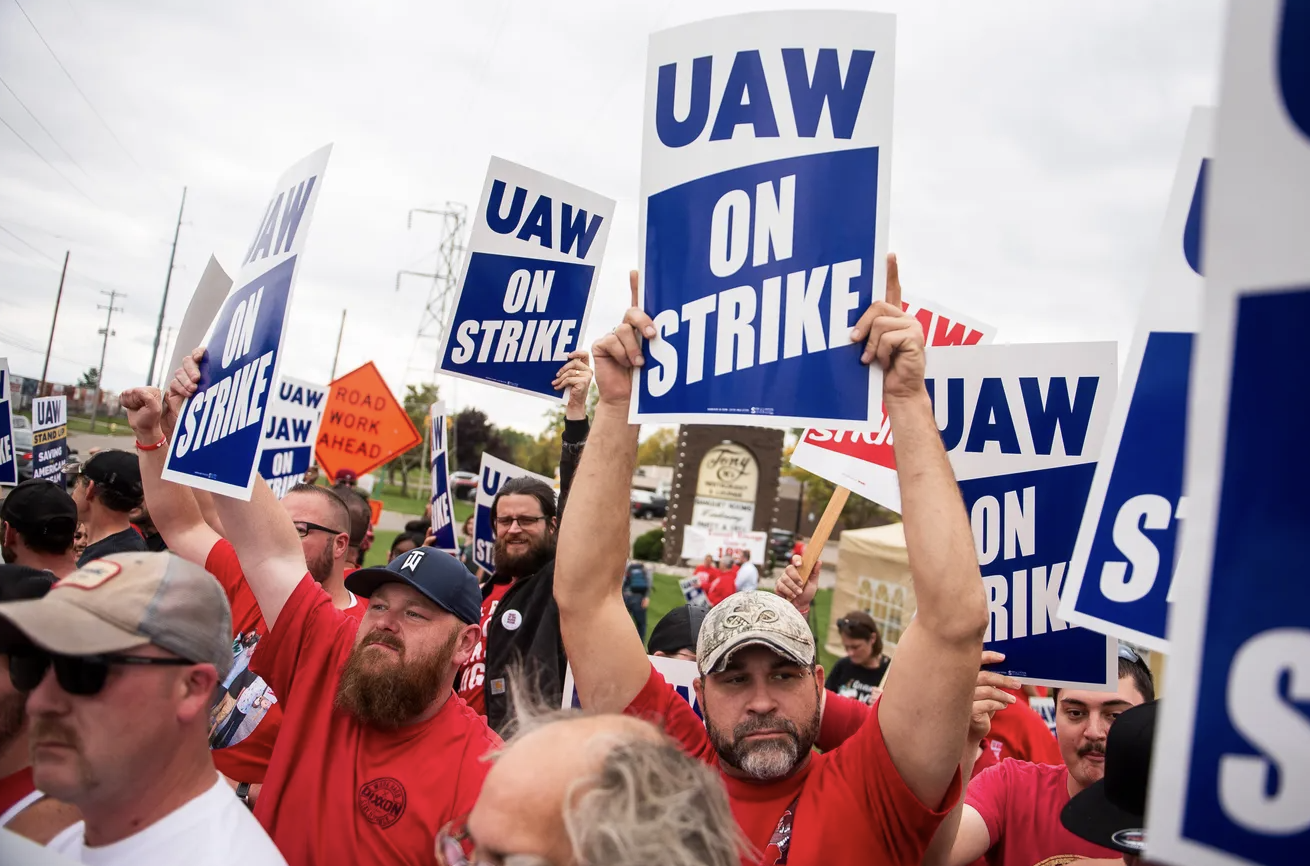Folks,
Greetings from the Burgh, where I am still recovering from a bad flare of Long Covid. However, tips keep coming into our Strike Tracker, and I hope to update you on what I missed last week.
“Brain Fog” Flareup Reducing Work Quality
Recently, I haven’t been able to do much reporting as I have been struggling with some Long Covid issues triggered by a nasty sinus infection.
I have been struggling with bouts of brain fog, which leave me confused and disoriented, making it tough to work. I’ve mainly been sleeping, hoping to get in a couple of hours of work daily. Hopefully, I will recover soon and be back in full force.
Thanks again to all who donated to help me take time off while sick.
Automakeras Have Lost Nearly $4 Billion during Strike
A new analysis shows that the Big Three have lost nearly $4 billion during the course of the nearly two-and-half weeks. From the Detroit News:
The targeted walkouts of selected plants have resulted in $325 million in direct wages lost, $1.1 billion in losses to the three companies, nearly $1.3 billion in losses to automotive suppliers, and $1.2 billion in dealer and customer losses, according to East Lansing-based economic consulting firm Anderson Economic Group, which has done work for Ford and GM. The firm’s estimates indicated that the second week of the strike, which was larger than the first, was more costly.
For more, check out the Detroit News
UAW to Target Dealerships
As the UAW strike escalates, the UAW has announced they will begin canvassing at dealerships starting this Saturday, October 7th.
The move is a tricky legal situation as encouraging customers not to shop at the dealership could be considered an illegal secondary boycott. The UAW is advising supporters to be careful in what they say when they picket.
“DO NOT attempt to persuade customers not to shop at the business where you are canvassing—no picket lines, no large groups in front of the dealership, no blocking driveways or doors or other entrances to the business, and no calls for a boycott,” the UAW wrote in an instructional guide for protestors at Big Three dealerships.
For more, check out the UAW’s instructional guide on how supporters can protest at dealerships.
CVS Pharmacist Strikes Around the Country Win Changes
Last week, pharmacists at over two dozen Kansas City-area CVS pharmacies walked out over understaffing and low pay.
The strikes were organized through non-traditional labor networks and are part of the growing movement of pharmacists throughout the country. The strikes won national attention and the support of the American Pharmacist Association.
CVS has responded by promising to increase staffing and reduce workloads at more than 60 pharmacies throughout the Kansas City area.
“As far as the concrete measures they promised, all that is short-term,” Corey Schneider, one of the striking CVS pharmacists, told USA Today. “They have given us more general promises that they’ll do better on hiring and training people – that’s where we need to see more details. I don’t think they’ve had a chance to figure out exactly what that looks like, but I’m willing to give them a chance to show us.”
For more, check out USA Today.
As SAG-AFTRA Strikes Drag on, Newsome Vetos Unemployment Benefits for Strikers
For the first time since June, the studio association AMPTP and SAG-AFTRA are meeting to resolve the 5-month-long strike of 160,000 members.
However, Governor Gavin Newsome decided to veto a bill that would grant unemployment benefits to striking workers. If he had signed the bill, California would have joined New York and New Jersey as the only states in the US that give unemployment benefits to striking workers.
“This veto tips the scales further in favor of corporations and CEOs and punishes workers who exercise their fundamental right to strike,” tweeted California Labor Federation President Lorena Gonzalez Fletcher on Saturday.
For more, check out the LA Times.
Inside Look at How Writers Strike Was Settled
Last week, after more than 150 days out on strike, the Writers Guild reached an agreement with the studios and ended their strike. The Hollywood Reporter has interviews with Writers Guild members on how the deal was made:
“I would say there’s one thing that wasn’t a turning point but was consistent all the way through, which was the membership solidarity and the commitment to solving these problems that we’d said from the very beginning were existential for us and that we could not leave this contract negotiation without a solution for, so that’s the first thing.”
“The second thing was SAG going out on strike. The AMPTP’s strategy of isolating the WGA and driving us toward pattern [deals] failed. And SAG said, “No, we also have existential issues, and we need to be accounted for.” Once two out of three guilds said that, it was clear that their strategy had failed. At that point, it became inevitable that the companies were going to have to come back to the table and make a deal that solved our problems.”
For more, check out the Hollywood Reporter.
News & Strikes Happening Elsewhere
- Northern Kentucky Amazon unionization efforts heat up
- The unionization wave hits L.A. area bubble tea cafes
- David McCall to succeed Tom Conway as Steelworkers International President
- Department of Labor has released its annual report on child labor
- Variety has a look at how Writers Guild members stayed creative during the strike
- Finally, a Writers Guild member reflects on sacrifices that they made to strike
Alright, yinz, that’s all for today. Keep sending tips, story ideas, and links to melk@paydayreport.com
Donate to help us cover the strike wave. Please, if you can, sign up as one of our 759 recurring donors today. Thanks for all the support.
Love & Solidarity,
Melk

